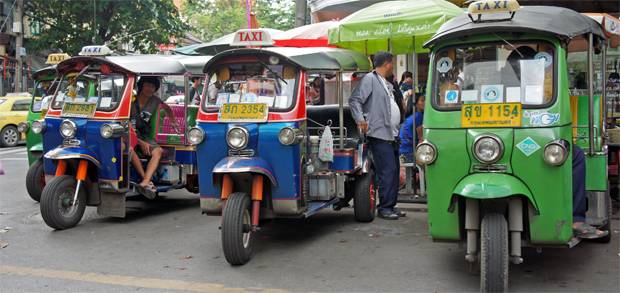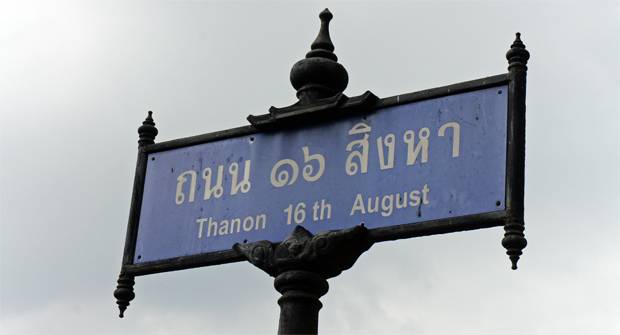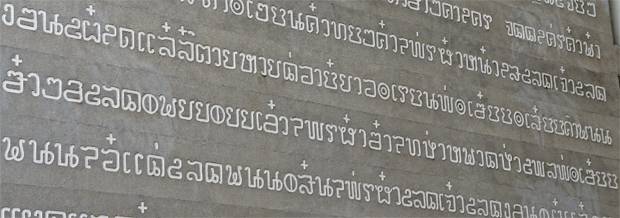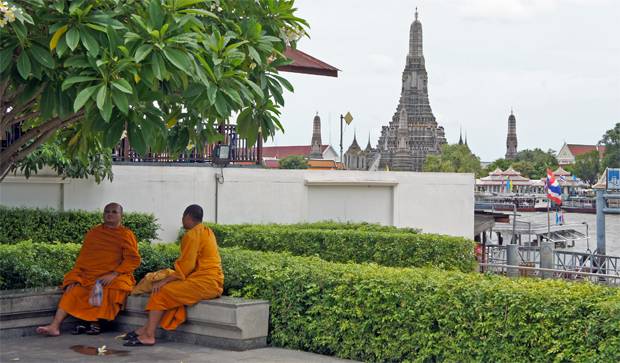One of the best advices we can give you for your trip to Thailand: make a small effort and learn a few words of Thai language for travelers. As Jaume Mestres reminded us well in the interview I did with him recently, learning the language of the country in which you live or travel is the best way to get closer and understand its culture. It opens doors and hearts for you, said Jaume. Albert Bosch also stressed that the treatment they give you also changes, it seems that they treat you less like a stranger when you speak a language well, and they treat you more like someone from home.
We cannot pretend to speak the language of a country through which we will travel for a few weeks or a few months, but we can try to learn a basic vocabulary, which will surely be very useful, either to show respect or to joke and break the ice with the natives. Also in rural areas or countries like China it can become almost essential. Really, learning some Thai language for travelers really pays off!
In my opinion, when you learn a foreign language you not only acquire a tool to communicate but also a new way of seeing things and a more accurate understanding of the character of the culture that has invented and used that language for hundreds of years.

For example, did you know that Thais usually use the verb eat 90% of the time followed by the word rice. They say Kin kao (กิน ข้าว), which literally means to eat rice (they use it even if they are going to eat something else!). This, which may seem silly, is proof of how important rice has been during the history of the country and its culture.
For all that, I suggest that when you come to Thailand you try to use a few words of Thai. I assure you that they will pay you with a huge smile.
I have been enrolled in a Thai school in Bangkok for about 10 months, going twice a week to study it. Despite being in school for 10 months, I have missed a lot of classes on trips, so I must have attended for about 6 months. Nowadays I can speak a basic Thai, enough to travel and to do simple procedures and even have simple conversations. I also know the entire alphabet and many of its rules. I can read it but most of the time I don’t understand it, since I don’t know the words I’m reading. I still have a long way to go if I really want to speak the language fluently.

Here you can find:
Introduction to Thai
Thai is a language with about 20 million native speakers. Only 20 because different dialects or languages are spoken in Thailand. Despite this, all Thais can speak Central Thai, which is taught in schools and used by the media. Also in Laos many people can understand and speak Thai as Lasioan is very similar. In total, there are approximately 60-75 million Thai language speakers.
Thai is a tonal language. It has 5 tones. In summary, this means that the same word could have 5 meanings depending on the tone in which it is pronounced (medium, low, high, ascending and descending):
For example, the word ‘mai‘, depending on whether the tone is medium, low, high, ascending or descending, can have 5 totally different meanings:
ใหม่ (new) ไหม (question / silk) ไหม้ (burn / burned) ไม่ (not) ไม้ (wood)
Thai also has its own alphabet made up of 44 consonants and 15 vowels (which become 28 combined).
The language is believed to come from southern China although its script was copied from the Khmer script of Cambodia (which itself came from southern India).
Some of the 44 Thai consonants:

Curiosities about Thai
– In Thai, khap (if the speaker is a male) or kha (for female speakers) are constantly added at the end of sentences. It doesn’t have a particular meaning, but it shows a polite and respectful attitude.
– The subject pronoun ‘I’ is phom for males, and dichan for females.
– In written Thai there are no blank spaces between words. At first it is very difficult to know where a word begins and ends.
– Thais don’t ask ‘How are you?’ They ask ‘Have you eaten yet?’ intead. (kin khao reu yang).
– They also have no specific words to say ‘goodbye’. Sometimes they use the English form bye bye (they actually have one, lakon, but it’s goodbye for a long time).
– As in Spanish, in Thai many times the subject Yo, tú, etc. is not used.

Thai Language for Travelers: some useful words and phrases
Even if you do not pronounce these words perfectly, they will most likely understand you if you use them in a context where they make sense (if you say arroy after eating, the waiter will understand that you liked the food without problems).
Hello – sawatdee khrap / kha (males use khrap, females use kha) สวัสดี
Thank you – khop khun khrap / kha ขอบคุณ
No problem / you’re welcome – mai pen rai khrap / kha ไม่ เป็นไร
How much is it? – thao rai khrap / kha เท่า ไหร่
Numbers – neung 1 sawng 2 saam 3 see 4 haa 5 hok 6 jet 7 paet 8 kao 9 sip 10
The food is delicious – aroy khrap / kha อร่อย
I’m from (plus the country) – phom (man) / Dichan (woman) maa jaak _______ มา จาก สเปน
Like – chawb khrap / kha ชอบ
I don’t like it – mai chawb khrap / kha ไม่ ชอบ
I like Thailand – phom (male) / dichan (female) chawb prathet thai ชอบ ประเทศไทย
It’s pretty – suai or narak น่า รัก
Yes – chai khrap / kha ใช่
No – mai chai khrap / kha ไม่ใช่
The bill please – check bin khrap / kha
Bathroom – hawng naam ห้องน้ำ
Where is the bathroom? – hawng naam yuu thi naai khrab / kha ห้องน้ำ อยู่ ที่ไหน

Do you want to learn more?
If this has seemed little to you and you want to learn more by watching YouTube videos, I suggest you visit one of the websites of Thai teachers, such as Ajarn Mod (Mod teacher). Her website is Learn Thai with Mod. Here’s one of her videos to get you started!

